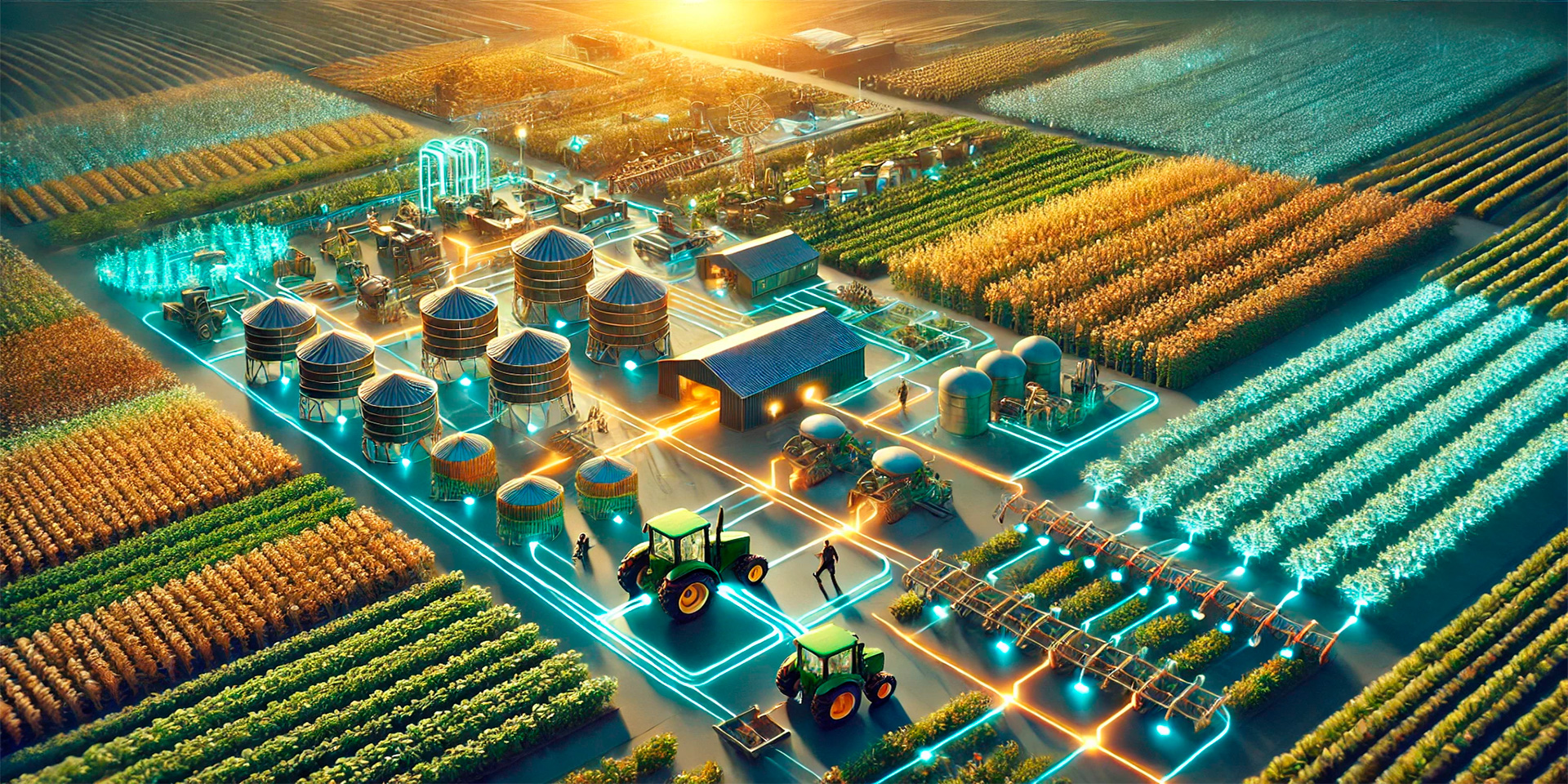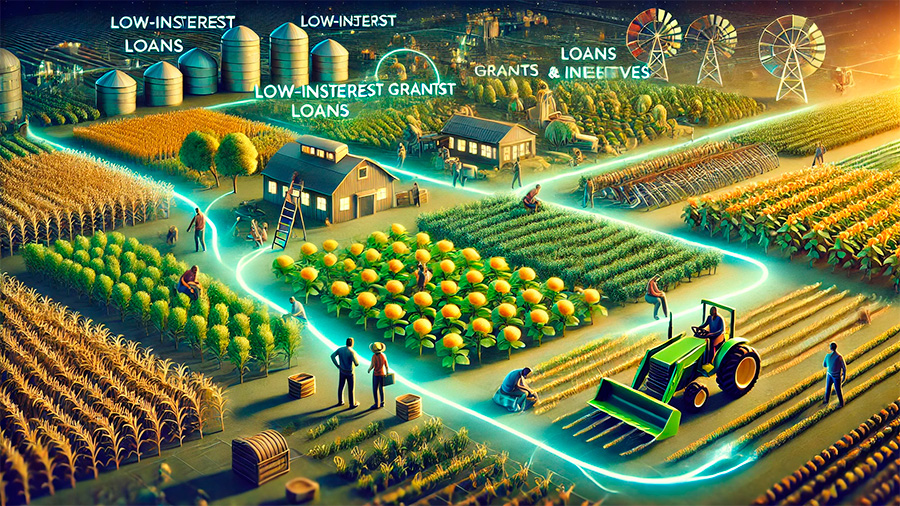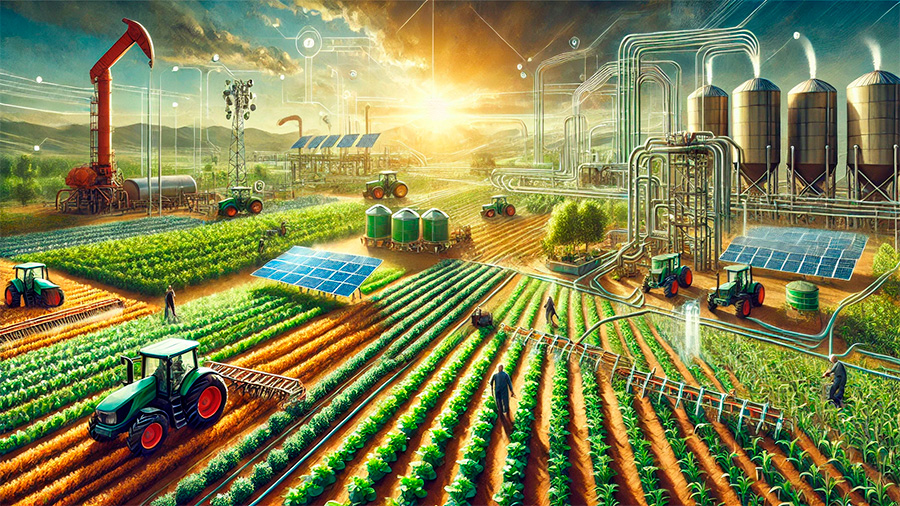
Precision Agriculture: How Subsidized Loans are Powering Farm Innovation
In today’s competitive agricultural landscape, farmers are increasingly turning to technology and modern equipment to enhance productivity and meet growing global demand. However, the cost of investing in advanced technologies can be prohibitive, particularly for small and medium-sized farms. Government-subsidized loans are playing a vital role in enabling farmers to access the financing they need to invest in productivity-enhancing equipment and sustainable farming practices.
This article explores how subsidized loans are helping farmers improve their operations and boost agricultural productivity.
The Role of Government-Subsidized Loans in Agriculture
Government-subsidized loans are designed to support farmers by providing them with affordable financing options that they may not be able to access through traditional commercial lenders. These loans typically come with lower interest rates, longer repayment periods, and favorable terms, making it easier for farmers to invest in new equipment, technology, and infrastructure that can improve productivity.
1. Lower Interest Rates for Equipment Purchases
One of the primary ways government-subsidized loans help farmers is by reducing the cost of borrowing for purchasing agricultural equipment. Modern machinery such as tractors, irrigation systems, and precision farming tools can significantly improve efficiency on the farm. However, the high upfront costs can be a major barrier for many farmers.
Benefits of subsidized loans for equipment purchases:
- Affordable financing: With reduced interest rates, farmers can secure loans to purchase necessary equipment without the financial strain of high borrowing costs.
- Long-term investment: Equipment financed through subsidized loans can pay off over time by increasing farm efficiency and reducing labor costs.
2. Supporting Sustainable Farming Practices
Many government loan programs are focused on promoting sustainable farming practices. By offering subsidies or reduced rates for loans aimed at improving environmental sustainability, these programs encourage farmers to adopt eco-friendly practices. Investments in solar-powered irrigation, water-saving technologies, and organic farming equipment are just some examples of how farmers can enhance their operations sustainably with the help of subsidized loans.
How sustainability loans benefit farmers:
- Lower operational costs: Sustainable technologies like solar panels or energy-efficient equipment can reduce long-term operational costs.
- Increased market value: Consumers are increasingly seeking out sustainably produced goods, and government support for green technologies helps farmers tap into this growing market.

Examples of Government Loan Programs Supporting Farmers
Governments across the world recognize the importance of agriculture to national economies and food security, and many have introduced loan programs to help farmers access the capital they need to grow their businesses. These programs often provide a combination of low-interest loans, grants, and financial incentives to encourage investment in modern farming practices.
1. USDA Farm Loan Programs (United States)
In the U.S., the U.S. Department of Agriculture (USDA) offers several subsidized loan programs to help farmers modernize their operations. The USDA Farm Service Agency (FSA) provides loans to purchase farmland, upgrade equipment, and invest in new technologies.
Key USDA loan programs include:
- Farm Ownership Loans: These loans help farmers acquire land or make capital improvements to their existing farms.
- Farm Operating Loans: Operating loans provide working capital for purchasing equipment, seed, and other essential inputs for the growing season.
- Microloans: Aimed at small and beginning farmers, microloans offer affordable financing for investments in sustainable practices or small-scale equipment.
2. European Union Agricultural Subsidies
The European Union (EU) has long supported its agricultural sector through the Common Agricultural Policy (CAP), which includes various subsidized loan programs and grants for farmers. These programs focus on encouraging sustainable farming, promoting rural development, and modernizing agricultural practices.
Benefits of EU agricultural subsidies:
- Incentives for sustainability: Farmers receive financial assistance for adopting eco-friendly practices such as organic farming or renewable energy projects.
- Modernization grants: EU funds help farmers invest in state-of-the-art technologies that increase productivity and reduce environmental impact.
Investing in Precision Agriculture With Subsidized Loans
Precision agriculture is one of the most effective ways to boost productivity, and government-subsidized loans are making it easier for farmers to adopt these advanced techniques. Precision agriculture uses data, GPS technology, and automation to optimize every aspect of crop production, from planting to harvesting.
1. Precision Planting and Irrigation
Farmers can use government-subsidized loans to invest in precision planting and irrigation systems, which allow them to monitor and control water usage, soil conditions, and crop growth. By reducing water waste and optimizing irrigation, farmers can improve crop yields and reduce costs.
Advantages of precision irrigation:
- Water conservation: Precision irrigation systems help farmers use water more efficiently, reducing waste and lowering costs.
- Increased crop yields: By delivering the right amount of water at the right time, precision irrigation helps crops thrive, boosting overall productivity.
2. GPS-Guided Equipment
Subsidized loans can also be used to purchase GPS-guided tractors and planting machines. These machines ensure that seeds are planted with optimal spacing and precision, reducing seed waste and improving overall crop management. By investing in this technology, farmers can cover more land with less labor, further increasing efficiency.

The Long-Term Benefits of Investing in Productivity
Government-subsidized loans offer immediate financial relief to farmers, but their benefits extend far beyond short-term gains. By investing in modern equipment and sustainable practices, farmers can ensure the long-term viability and profitability of their farms. Higher productivity translates into increased revenue, allowing farmers to pay off their loans while continuing to expand and improve their operations.
1. Increased Profitability
Investing in productivity-enhancing technologies through subsidized loans allows farmers to increase their output without proportional increases in labor or input costs. This improved efficiency leads to greater profitability, helping farmers grow their businesses and remain competitive in the global market.
2. Environmental Resilience
In a world where climate change is increasingly affecting agriculture, farmers who invest in sustainable practices are better positioned to handle environmental challenges. Subsidized loans that support investments in renewable energy, water conservation, and soil health help farmers build more resilient operations that can withstand the effects of climate variability.
Conclusion
Government-subsidized loans are crucial tools for helping farmers boost productivity and modernize their operations. By providing affordable financing for equipment purchases, precision agriculture technologies, and sustainable farming practices, these loans empower farmers to improve efficiency, reduce costs, and increase profitability. As farmers continue to face the challenges of rising global demand and environmental pressures, access to subsidized loans will play an essential role in ensuring the long-term success and sustainability of the agricultural industry.
Calendar
| M | T | W | T | F | S | S |
|---|---|---|---|---|---|---|
| 1 | 2 | 3 | 4 | 5 | ||
| 6 | 7 | 8 | 9 | 10 | 11 | 12 |
| 13 | 14 | 15 | 16 | 17 | 18 | 19 |
| 20 | 21 | 22 | 23 | 24 | 25 | 26 |
| 27 | 28 | 29 | 30 | 31 | ||
